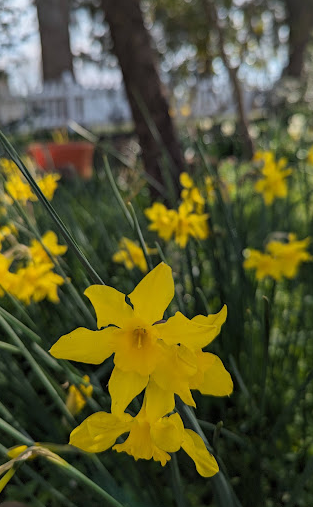Wild Easter Lilies
- Clifford Brock
- Mar 25, 2024
- 3 min read
Far out in the wild wetlands of the eastern US, you can find large masses of a beautiful but often overlooked wildflower blooming right about now (late March). It goes by many names: rain lily, Easter lily, Atamasco Lily, even "Fairy" lily, but this isn't a true lily. It's in the Amaryllis family, which makes it related to spider lilies, crinum, and daffodils. And like all those genera, it is avoided by deer and other herbivores.

The genus Zephyranthes is vast and diverse, and to my knowledge is only found native in the western hemisphere, with Mexico being the locus of diversity. But here in my part of the country, Atamasco is the only rain lily I encounter out in the woods. While other rain lilies come in a rainbow of colors, our native one is always white, though after pollination it does turn a light pink- a trait it shares with the native white trillium (Trillium grandiflorum)- apparently as a signal to bees that it's been visited.
I remember the first time I really "noticed" this plant. I was on a field trip with Tom Patrick. Tom was, he died a few years ago, an accomplished botanist who was nice enough to take me out into the woods to see cool plants. Mr. Patrick was a passionate life-long learner and environmental steward. We need more humans like him to mentor
He showed me an area just south of Monticello with hundreds of thousands of wild Easter lilies. And seeing them all in synchronous bloom was unforgettable... despite my suffering from seasonal allergies. These always seem to bloom when I'm most miserable with sneezing and the inevitable sinus infection that follows. Yet nature and an experience like that is worth the torture!
Despite being relatively easy to grow, this plant is tough to locate in the horticultural trade. Perhaps it's because the flowers don't last long or perhaps because it is often thought of as something "wild" or "rare"... Whatever the reason, I usually only find it for sale online at native plant or specialty nurseries. It does require more moisture than your average rain lily, though it adapts to typical garden conditions from sun to dappled shade. I have a clump that persists at my mom's house and multiplies with almost no care in the full blazing sun- even with being periodically mowed down.
In the wild they are found in a variety of habitats, from thin-soiled granite outcrops to deep moist floodplains, it is by no means rare, at least here in the Piedmont of Georgia. And despite blooming for only 2 weeks maximum, it has large flowers for a rain lily, perhaps the largest of the genus.

As far as propagation goes, these rain lilies do multiply and form clumps, so can be periodically divided. But I find growing seed to be quite satisfying albeit relatively slow. Plus the shiny black seeds are a joy to collect and will germinate fairly quickly. I love growing all sorts of rain lilies from seed, and because they freely hybridize, the offspring may have unexpected colors! However, I've never known Zephyranthes atamasca to hybridize with anything.
I found the photo to the left on Facebook from a guy in south, Georgia. Sadly I can't remember his name nor do I have permission to use his photo... oops! But his clump is amazingly beautiful!




Comments